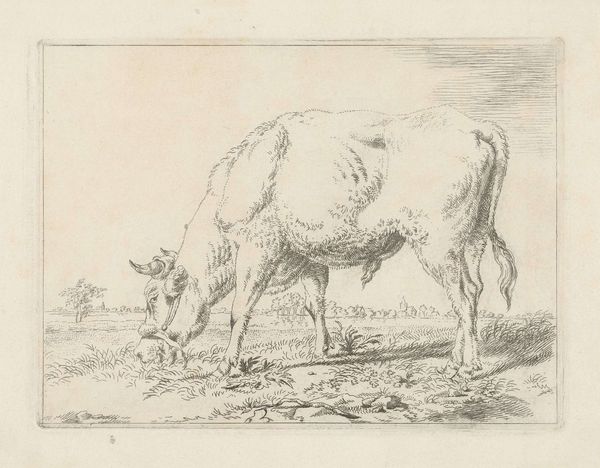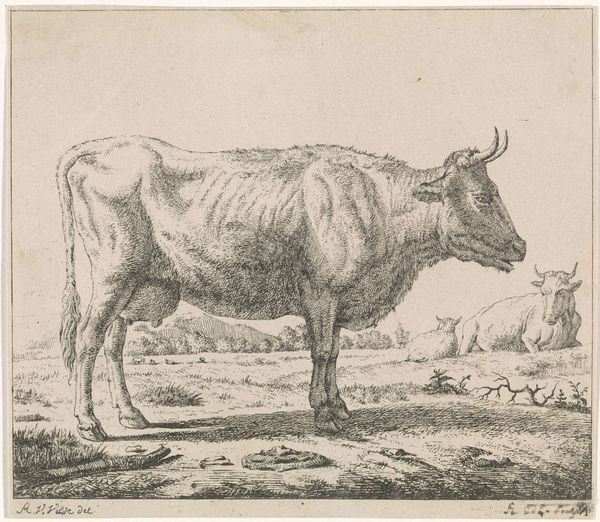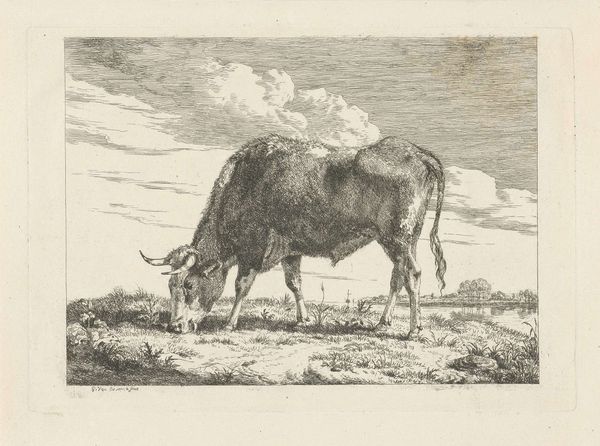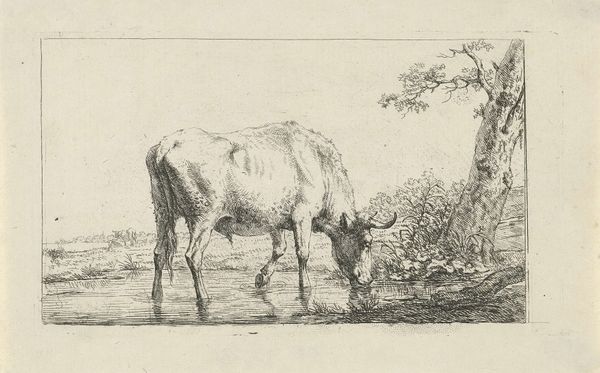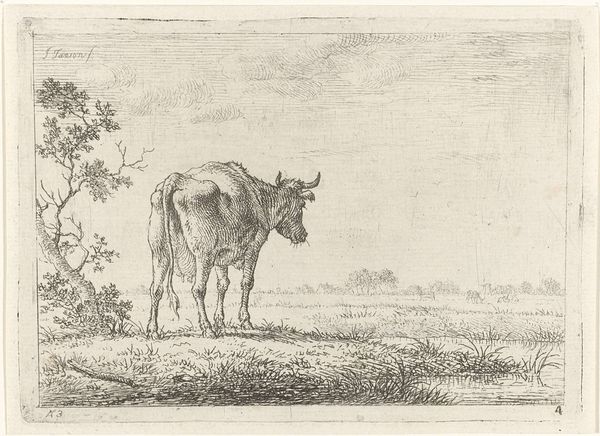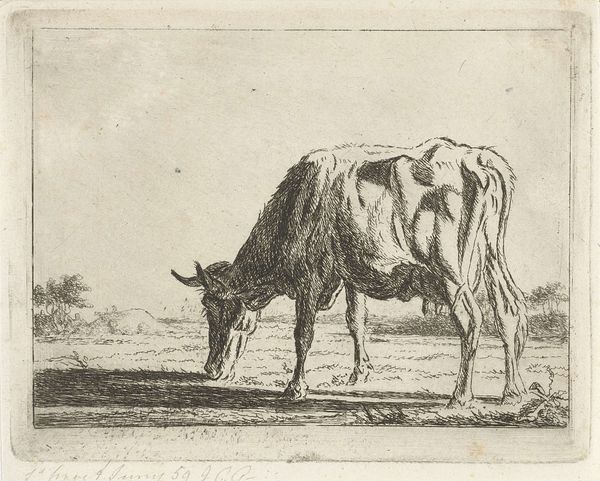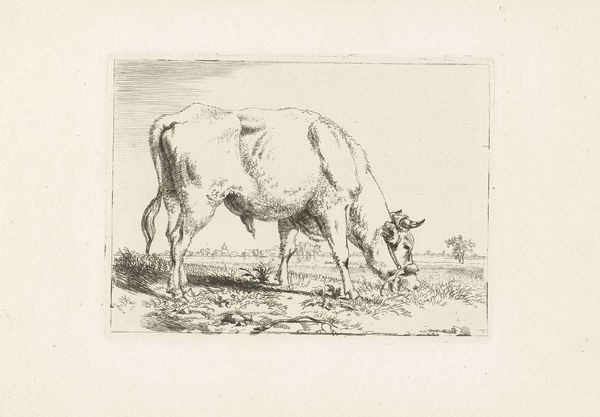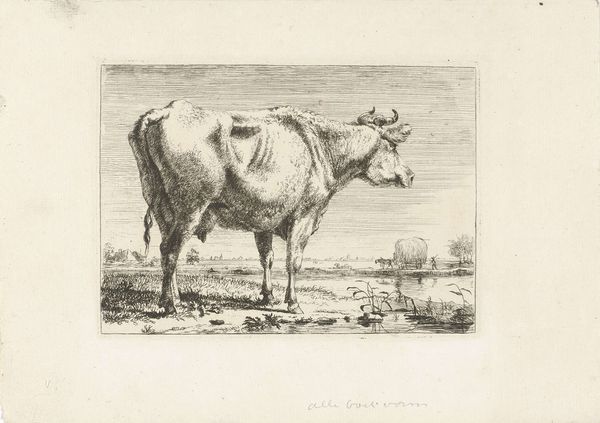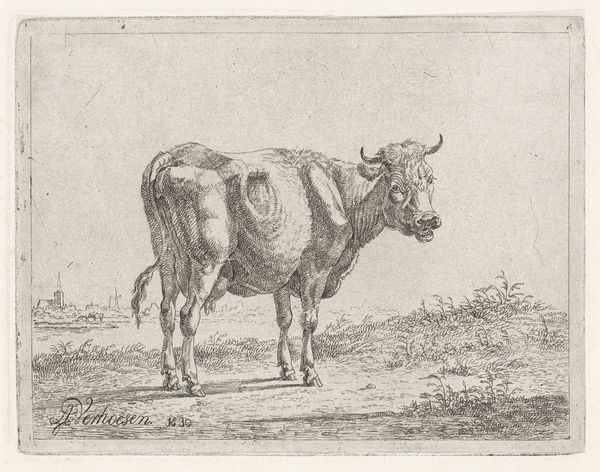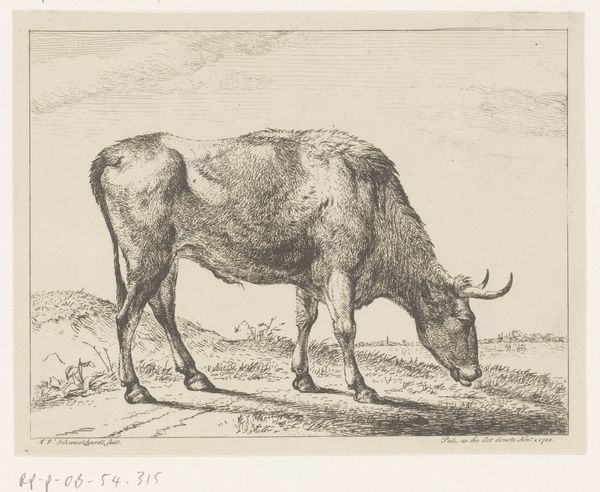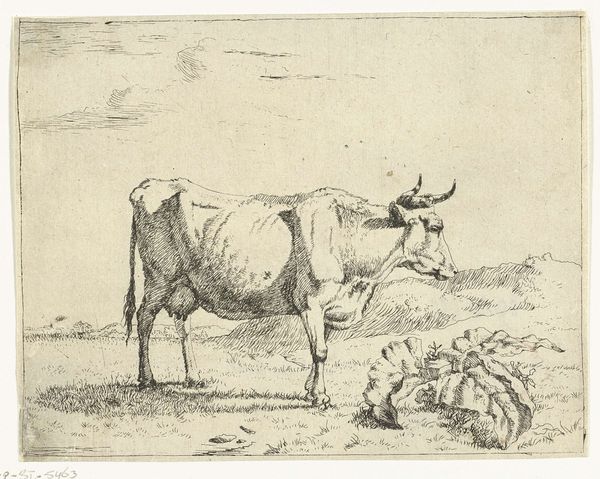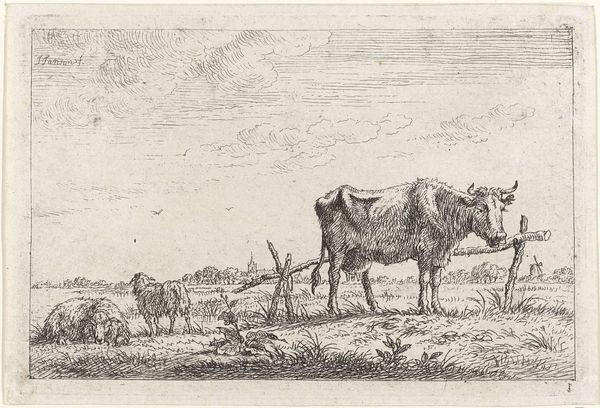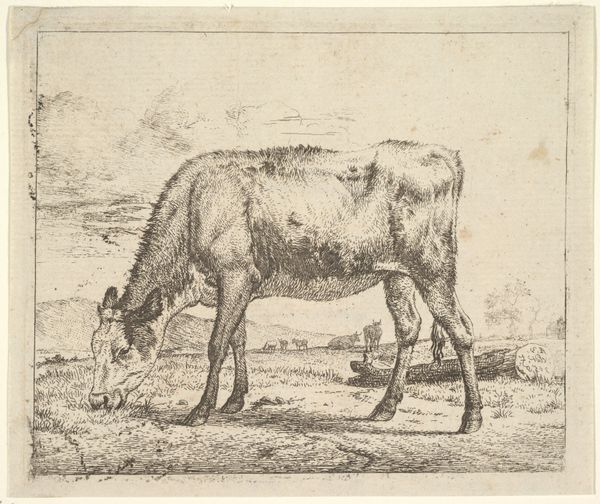
print, engraving
# print
#
old engraving style
#
landscape
#
figuration
#
genre-painting
#
engraving
#
realism
Dimensions: height 125 mm, width 170 mm
Copyright: Rijks Museum: Open Domain
Curator: This unassuming print, simply titled "Standing Cow," comes to us from an anonymous hand sometime between 1798 and 1849. It's an engraving. What’s your first take on this seemingly mundane scene? Editor: A certain quietude. Despite its straightforward subject, there's a contemplative mood. The cow stands almost as a symbol of pastoral life itself, stoic against the backdrop. Curator: Precisely! And within that apparent simplicity, a wealth of cultural coding emerges. Consider the cow, often a symbol of fertility and nourishment. Its representation here isn't just of an animal, but a whole ecosystem of agricultural and domestic values. Editor: Agreed, and think about the social and political implications too. During the period of its making, images like these, circulating through prints, would have reinforced an idealized vision of rural life. Land ownership, agrarian values, and a certain vision of the 'good life' were being implicitly promoted. Curator: That's a compelling point. It raises questions about who consumed and created these images, and to what end. We're talking about a growing middle class that idealized, even romanticized, rural labor, while perhaps remaining distanced from its realities. The image almost functions as propaganda in that regard. Editor: And look how the anonymous artist uses the engraving medium itself. It allows for the mass dissemination of this image. This pastoral vision could be spread far and wide, shaping perceptions of national identity rooted in land and nature. Curator: It's also noteworthy how the landscape seems carefully constructed to reinforce this vision. See the small figure working on the left of the cow – that figure becomes part of a larger, idealized landscape. The scene reinforces a human connection to land and work that hides the struggles of a laborer's existence. Editor: The cow itself is hardly idealized, though; it looks quite weary. Perhaps there’s an unintentional realism poking through the constructed symbolism. The marks of daily life seem etched on it! Curator: A good observation. This invites us to challenge our own received notions of pastoral life and bucolic imagery. It's never a simple representation. Editor: A cow as cultural commentary then? Who knew? Curator: Absolutely. Sometimes the simplest images are the richest in their silent commentaries. A valuable insight to glean, for sure!
Comments
No comments
Be the first to comment and join the conversation on the ultimate creative platform.
